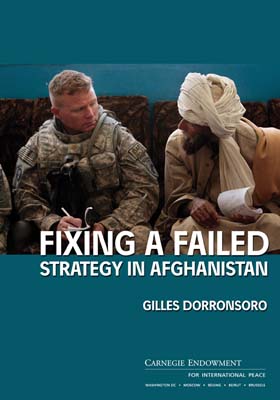As the debate on future U.S. strategy draws to a close, the war in Afghanistan is spreading to the North (an area that had previously been relatively quiet), the balance of power in Afghanistan has shifted in the Taliban’s favor, and the Afghan government continues to lose legitimacy in the eyes of the population and international community. In order to correct a failing strategy, the United States and its allies need to protect cities and reallocate more resources to the North.
Gilles Dorronsoro explains that more troops alone will not fix a flawed approach and details what a new, successful U.S. strategy should look like:
- Secure key cities and roads: If a state can be rebuilt in Afghanistan it will start in the cities, so less energy should be focused on the Pashtun countryside. This approach will decrease Coalition casualties and increase local participation.
- Redistribute Coalition troops: Troops are heavily deployed in the South and East where the prospects for success are low. They should be refocused on the North, where the Taliban can be stopped.
- Redistribute development aid: Development dollars are currently being directed most heavily to areas where Coalition control is weakest. These scarce resources should instead be focused on the more peaceful districts of Afghanistan.
- Build an Afghan partner: Increase the size and capabilities of the Afghan National Army, but understand that this will not happen overnight. An Afghan army of 150,000 by 2015 is a realistic and achievable goal.
“The Coalition badly needs a success in the next few months to counter the widely held perception that defeat is the likely outcome,” concludes Dorronsoro. “The current strategy could very well fail and result in yet another demand for reinforcements next year. A vigorous debate―more about strategy than resources―is needed.”





